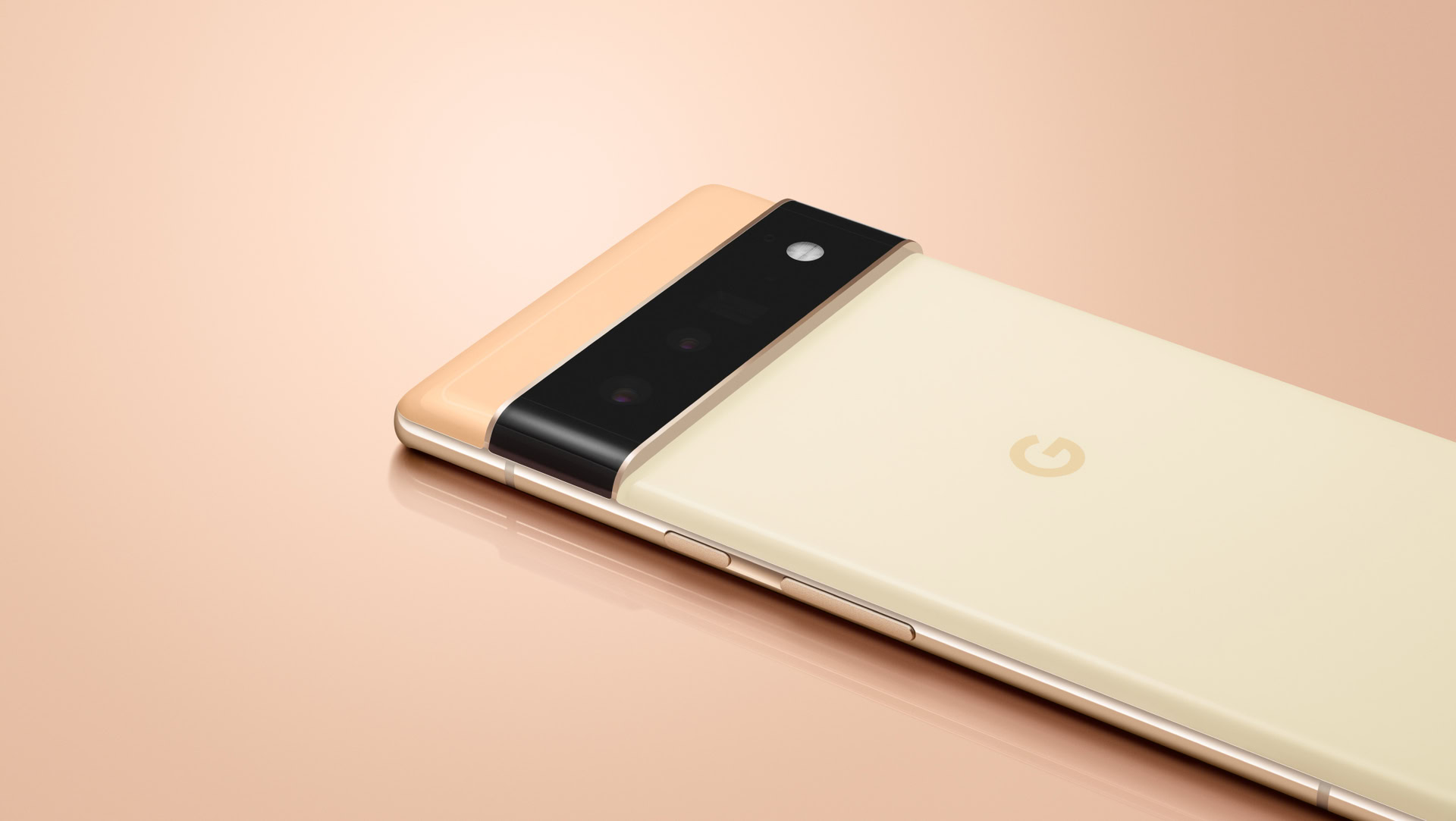Affiliate links on Android Authority may earn us a commission. Learn more.
Google Pixel 6 Pro hands-on: Taking the kitchen sink approach
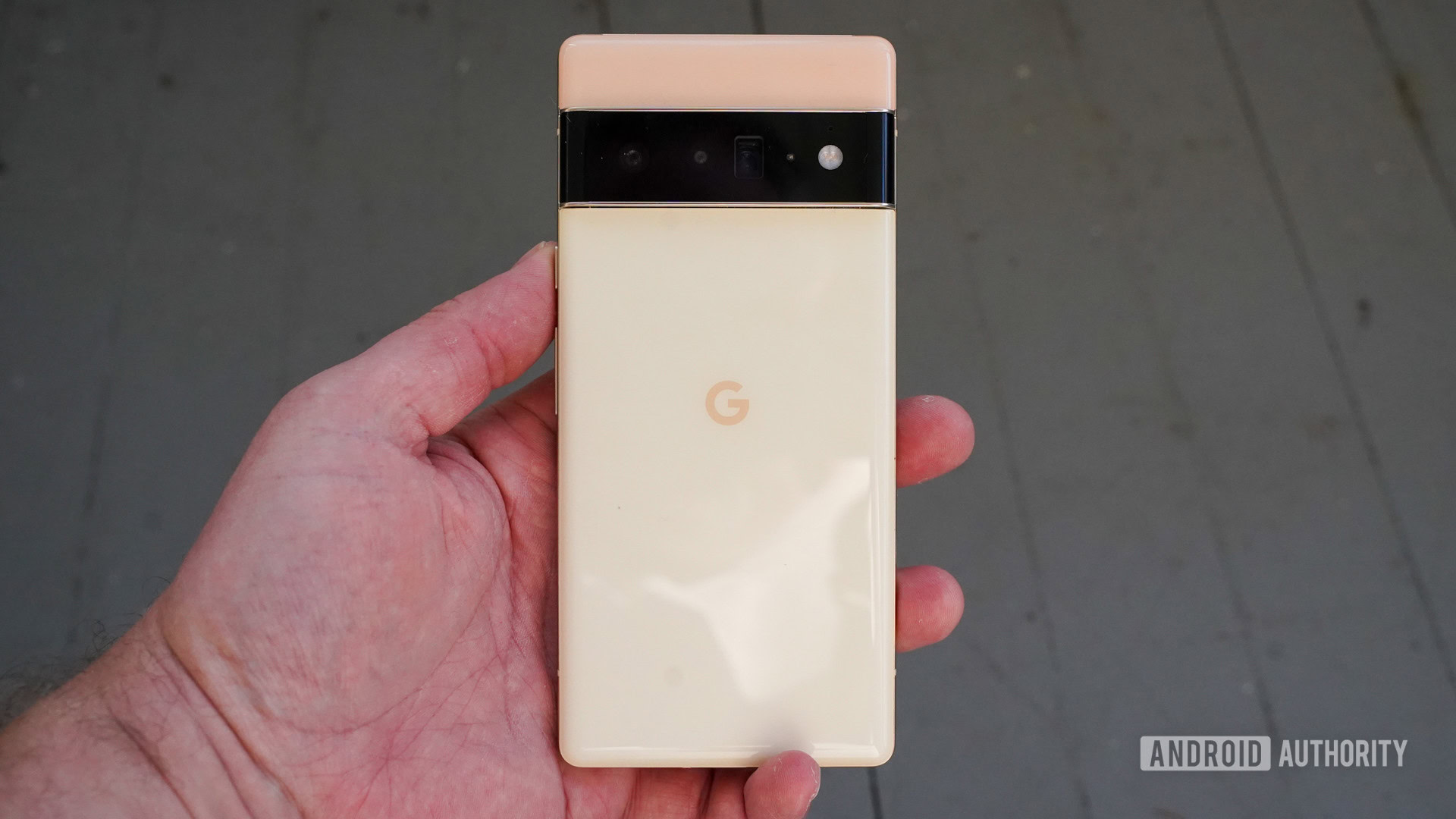
After an endless and exhausting few months of leaks, the Google Pixel 6 series is here with the Pixel 6 and Pixel 6 Pro. The two phones, designed by Google, take the company’s vision for Android in an entirely new direction thanks to a fresh perspective on the hardware and the software together. These are not like the Pixels of yore — especially not the Pixel 6 Pro (starting at $899).
In Android Authority‘s Google Pixel 6 Pro hands-on, you’ll learn what’s to like, what’s not to like, and what simply is. Interested in the base model? We have a separate hands-on of the Google Pixel 6 for you can read here.
Are you ready? Let’s dive in.
A change of pace
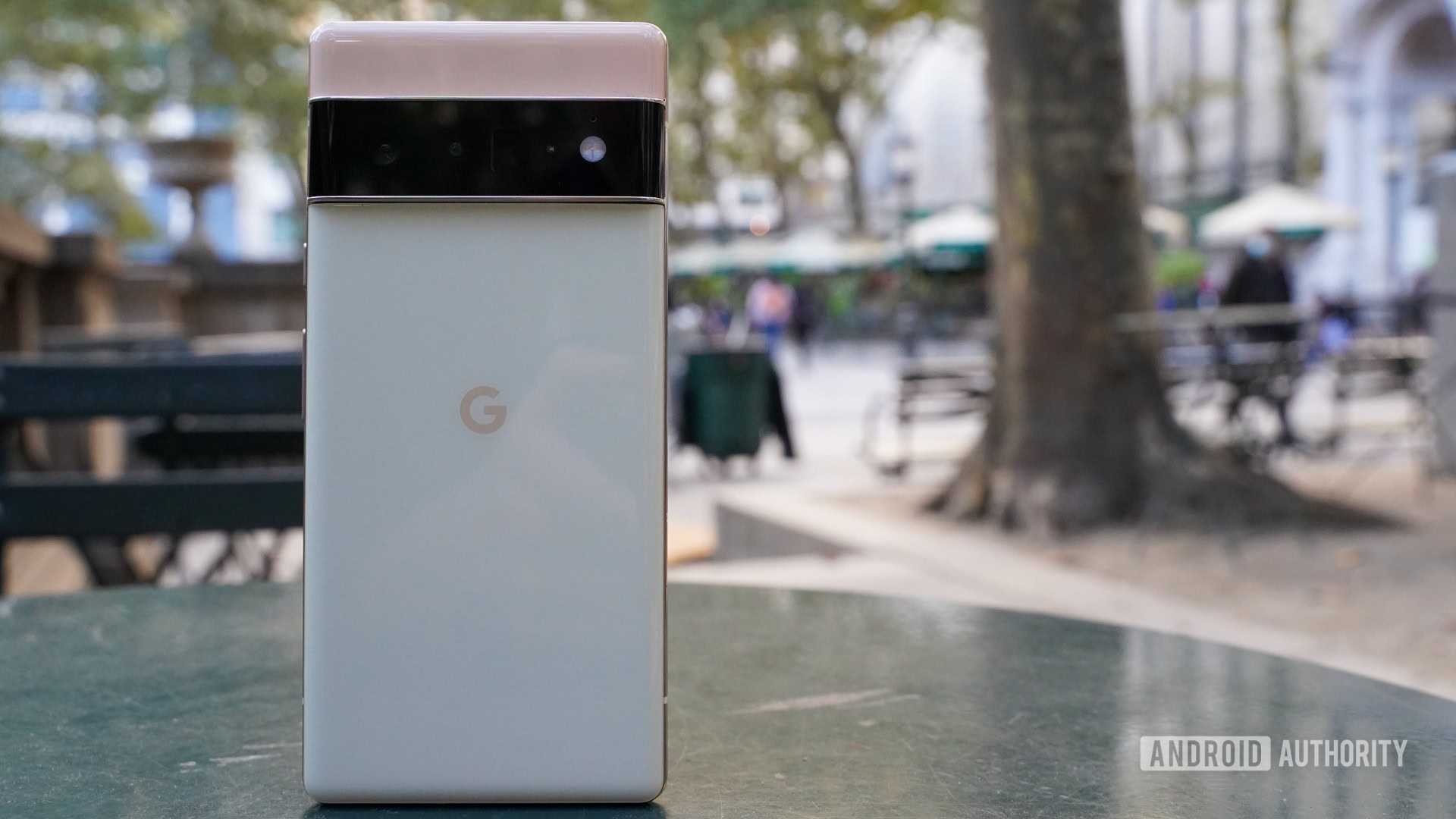
The Google Pixel 6 Pro stands out — way the hell out. The Pixel 6 Pro is a bold change of direction for Google, which has typically kept its smartphones fairly conservative in appearance. It’s among the most unique-looking smartphones released this year thanks to its multi-colored glass segments and aircraft carrier-sized camera module. Surely the phone’s looks will turn off as many buyers as it appeals to, and that’s totally fine.
The Pixel 6 Pro is a clear step away from the design language of the Pixel 5 and Pixel 5a phones. I’d call it a total break. Gone is the coated unibody aluminum chassis and in its place you’ll find large glass panels and metal framing everywhere. The materials and overall design make the 6 Pro one of the most premium phones to come from Google. It’s a big deal.
The Pixel 6 Pro is one of the most premium phones to come from Google.
There’s still a hint of Google in there. The new colorways of the Pixel 6 Pro — Stormy Black, Cloudy White, and Sorta Sunny — are in keeping with Google’s ongoing black and white themes. The Sorta Sunny shade, which is what we spent time with, is a totally new set of contrasting yellow-ish colors and gold framing from Google that are vastly different from the blacks, grays, blues, and silvers of many of today’s phones. If you’re curious, the smaller Pixel 6 comes in its own family of colors as well.
The rear panel is particularly busy. A single large glass panel fills up about two-thirds of the area. It abuts the large, horizontal camera module, which is itself framed in metal ridges. You can spot the three lenses and the flash contained in the black camera glass. Then a small section of colored glass that’s different from the main shade fills the rest of the space between the camera module and the top of the phone.
It’s hard to be on the fence about how these phones look. They have that love ’em or hate ’em vibe. Whatever you think of the Pixel 6 Pro’s looks, the one thing you can’t do is ignore it.
Heavy duty hardware
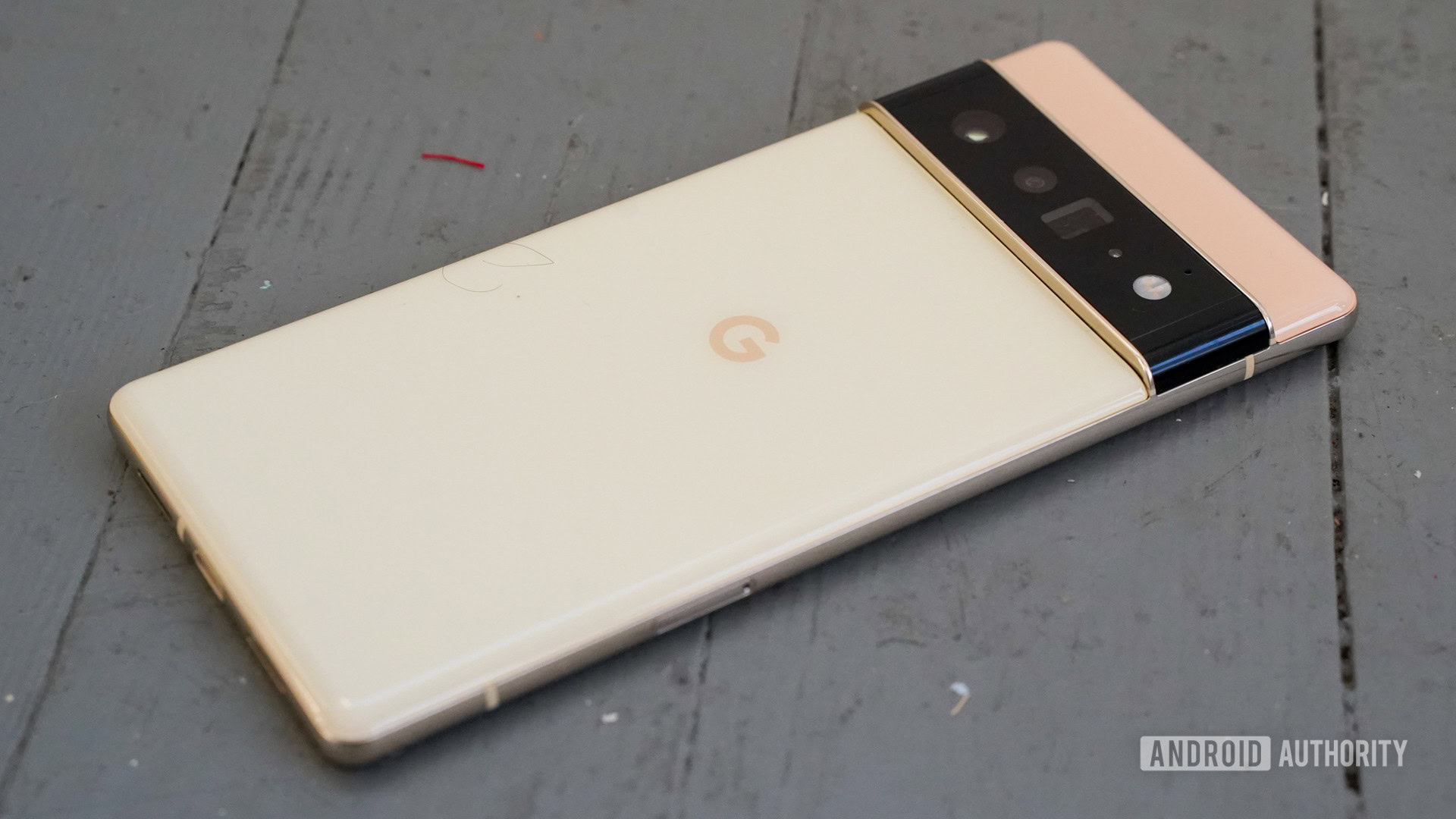
Beyond the phone’s looks, there’s plenty else to notice about the Pixel 6 Pro’s hardware.
Google has wholly bought into the metal-and-glass sandwich arrangement. A substantial metal alloy frame is glued between Gorilla Glass Victus panels. The metal thickens up a bit along the top and bottom edges of the phone and is thinner along the side rails. It is entirely smooth. The glass is curved on both the front and the back, giving the display a rounded edge and the rear a deep contour. All this glass results in a device that feels far more delicate than any Pixel before it. I’m terrified of dropping it, no matter the purported strengths of the Victus glass.
If super big phones are your jam, the Pixel 6 Pro has you covered.
The Pixel 6 Pro is absolutely gigantic. With a 6.7-inch screen, it’s tall, wide, and thick at 163.9 x 75.9 x 8.9mm. It’s Galaxy Note 20 Ultra sized. The Pixel 6 Pro utterly dwarfs last year’s Pixel 5, which was diminutive by design. The 6 Pro is also crazy heavy at 210g. Adding a case for protection will only make the entire package all the bigger and heavier. It won’t be easy for everyone to use and those with smaller hands may find the Pixel 6 a better fit (though that phone, sadly, isn’t much smaller than the 6 Pro.) If super big phones are your jam, the Pixel 6 Pro has you covered.
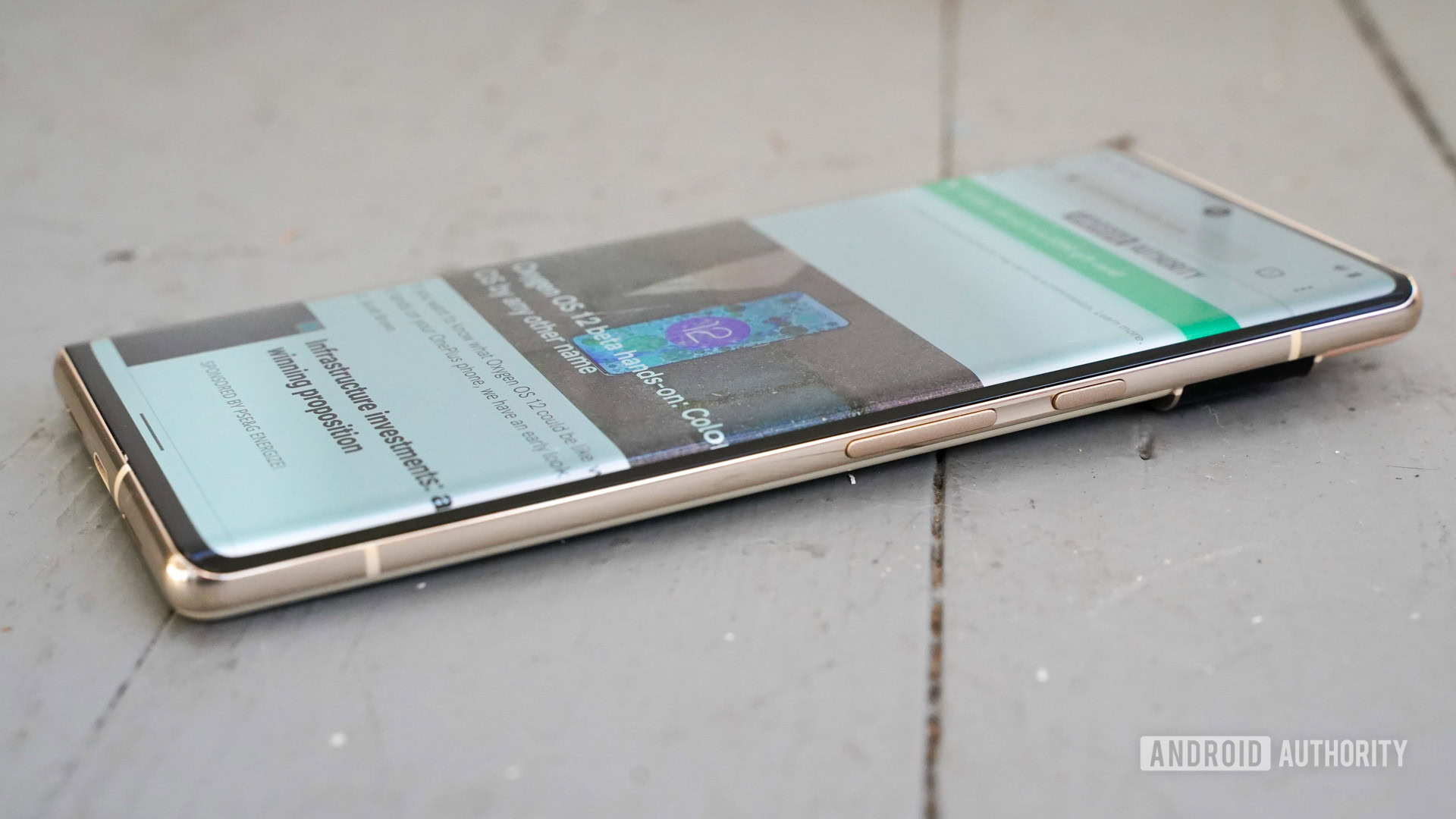
Touring the phone’s outer edge you’ll encounter all the functional elements you’ve come to expect from a modern phone. The right edge hosts the power button and volume toggle. These controls have minimal profiles and tight feedback at first feel.
Google Pixel 6: Hot or not?
The USB-C port is centered on the bottom edge and the SIM card tray is positioned within the left edge of the phone. Google says the Pixel 6 Pro supports two SIMs: one physical and an eSIM. One odd thing. The top edge of the phone is mostly plastic. An insert fills a significant space between the two corners of the metal frame. We can only guess this is meant to help the 5G radios perform better.
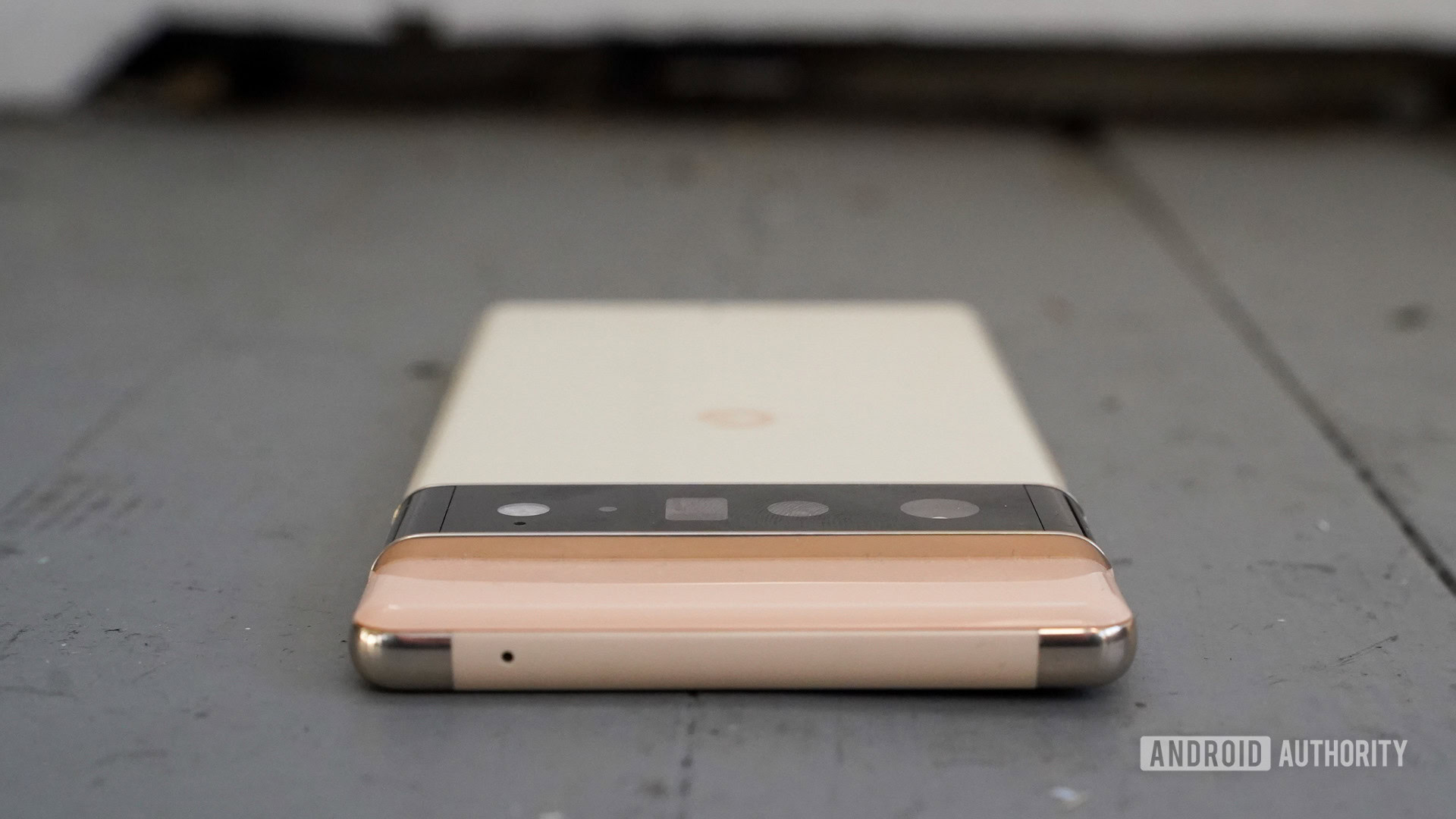
The Pixel 6 Pro carries an IP68 rating, which means it can handle submersion in water. This is a table stakes feature for a phone in this price segment and we’re glad to see Google ensured the phone is protected.
Stereo speakers are on board. In a quick test we were able to determine that they are fairly loud and well balanced, but we’ll need to give them more time to find out how good they really are in our full Pixel 6 Pro review.
Cinematic screen
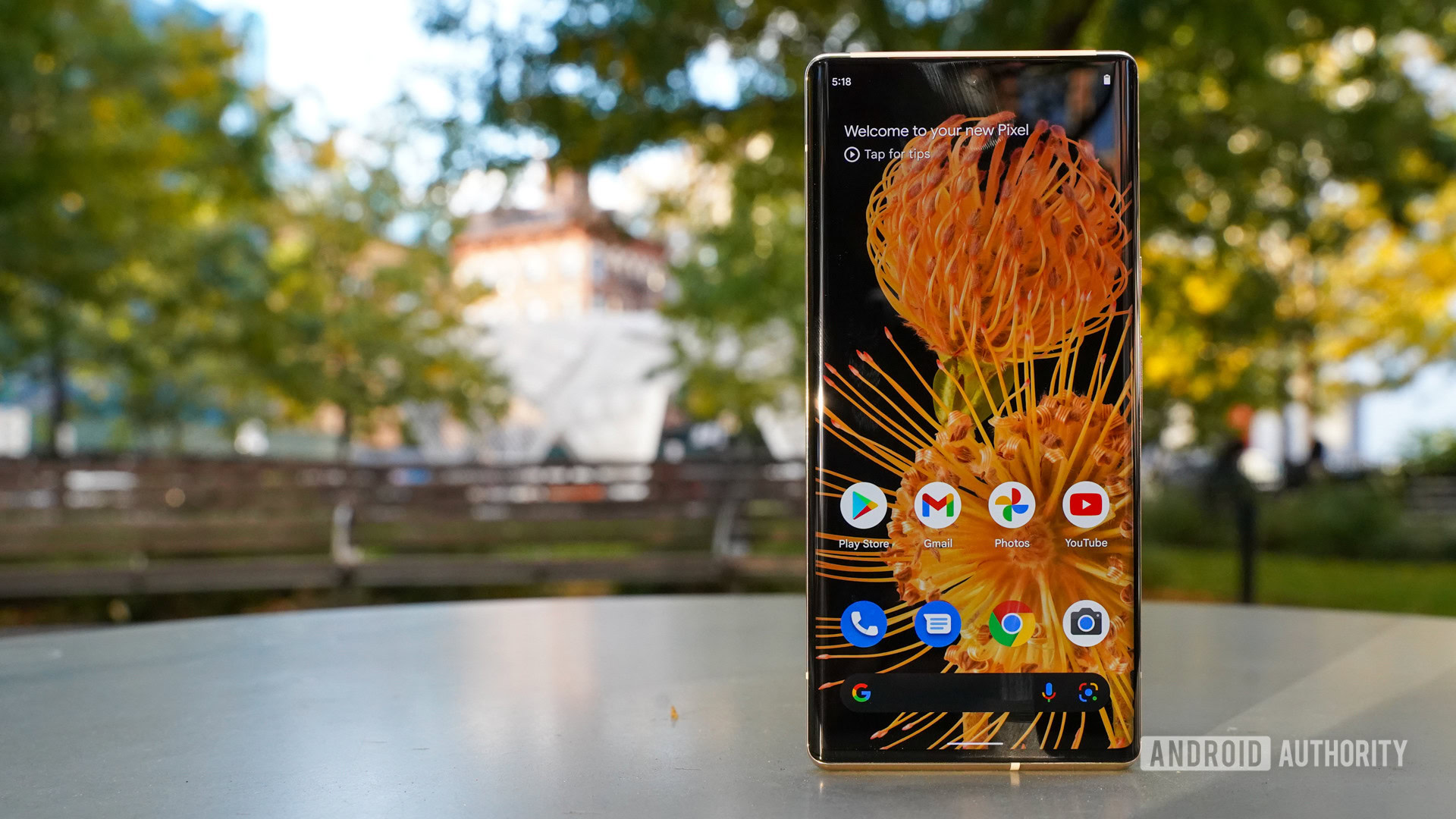
Google went with a 6.7-inch LTPO OLED display. It crams 3,120 x 1,440 pixels for a pixel density of 512ppi. That’s the highest we’ve seen from a flagship in a while. Many of today’s competing phones have stuck with FHD+ resolutions. With an aspect ratio of 19.5:9, the screen isn’t overly skinny looking.
The screen is capable of refresh rates up to 120Hz. The Pixel 5 was limited to 90Hz. Google calls the Pixel 6 Pro’s adaptive refresh rate “Smooth Display” and says it can range up and down depending on the action taken on the screen to balance performance and battery life. This is pretty standard for a modern flagship.
See also: Refresh rate explained
Other specs worth noting are the 1,000,000:1 contrast ratio, HDR support, and 24-bit depth for 16 million colors. The selfie camera is centered at the top punch hole style. With dark mode enabled you’ll hardly ever notice it.
How does it all look? Fantastic. I was able to use the phone indoors and out and the screen always looked bright, sharp, and smooth. There’s no question it’s the finest display to grace the front of a Google Pixel. When held side-by-side with a Samsung Galaxy S21 Ultra, which has a similarly spec’d display, we’d call the experience pretty close to even. The quick tour I took around some Netflix content showed just what the screen can do, and it’s a great experience for watching movies.
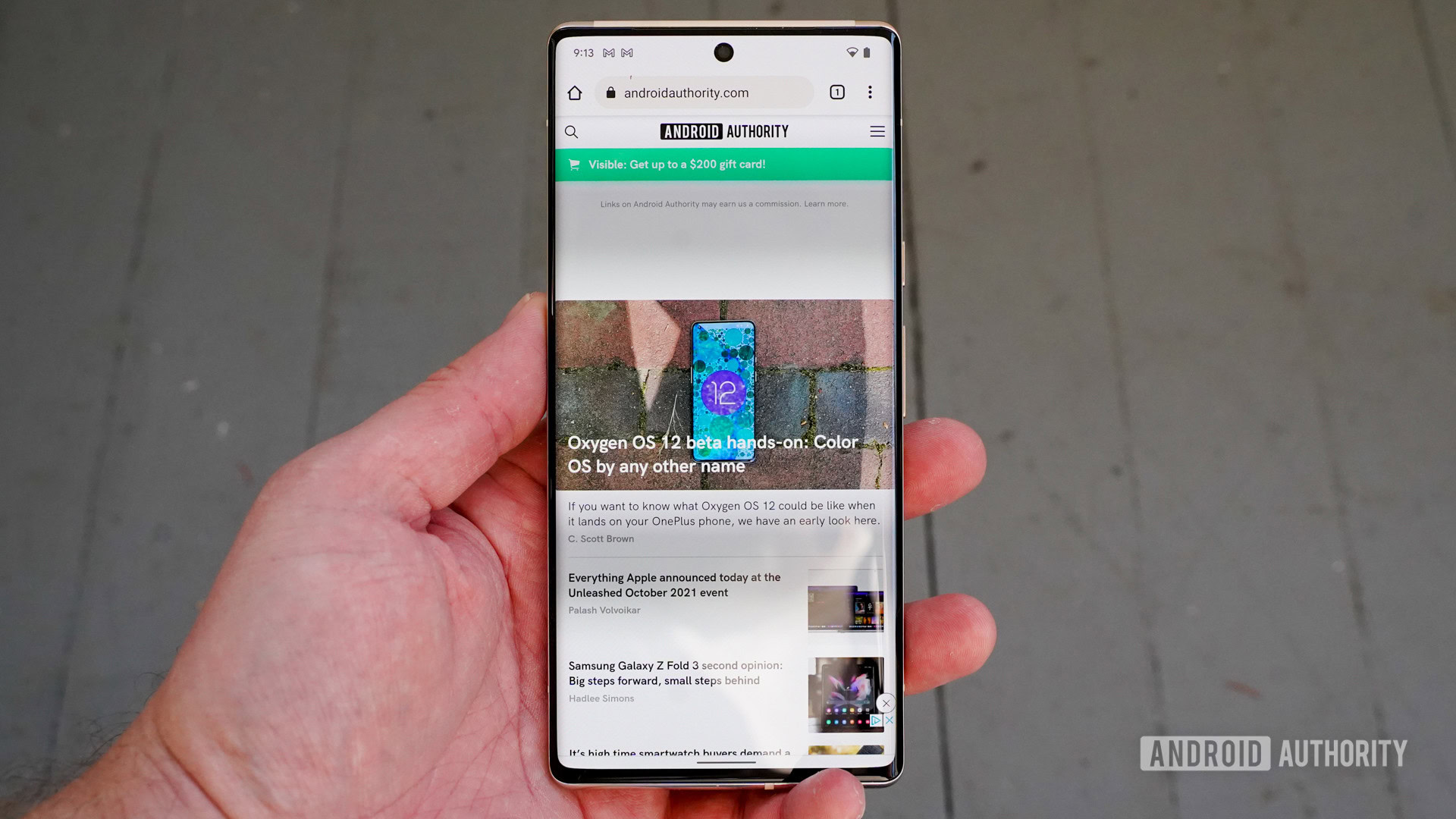
Google’s always-on display is available for showing the time, date, and battery percentage. It flashes notifications as they arrive, and the constantly available song-searching tool shows you the name of whatever song happens to be playing nearby.
The Google Pixel 6 Pro has a lovely screen that is sure to impress.
The Pixel 6 Pro eschews the rear-mounted fingerprint reader of the Pixel 5 in favor of an under-the-display fingerprint reader for biometric security. It wasn’t difficult to train and I found it worked mostly well over a short period. There’s no secure facial recognition like there was on the Pixel 4 XL, in fact there’s no facial recognition at all.
Related: Display specs and terms explained
There is one thing that will probably bum a few people out, and that is the curved edges. While it is nice that the Pixel 6 Pro has no side bezels, the trade-off is the curved glass. This isn’t my favorite thing on today’s phones. I didn’t experience any false touches along the edge in the short time I spent with it, but that’s not to say it won’t happen. Further, there’s always a little bit of white shift along the actual curve, which changes the way colors sometimes look.
Aside from that, the Google Pixel 6 Pro has a lovely screen that is sure to impress.
Electric experiences
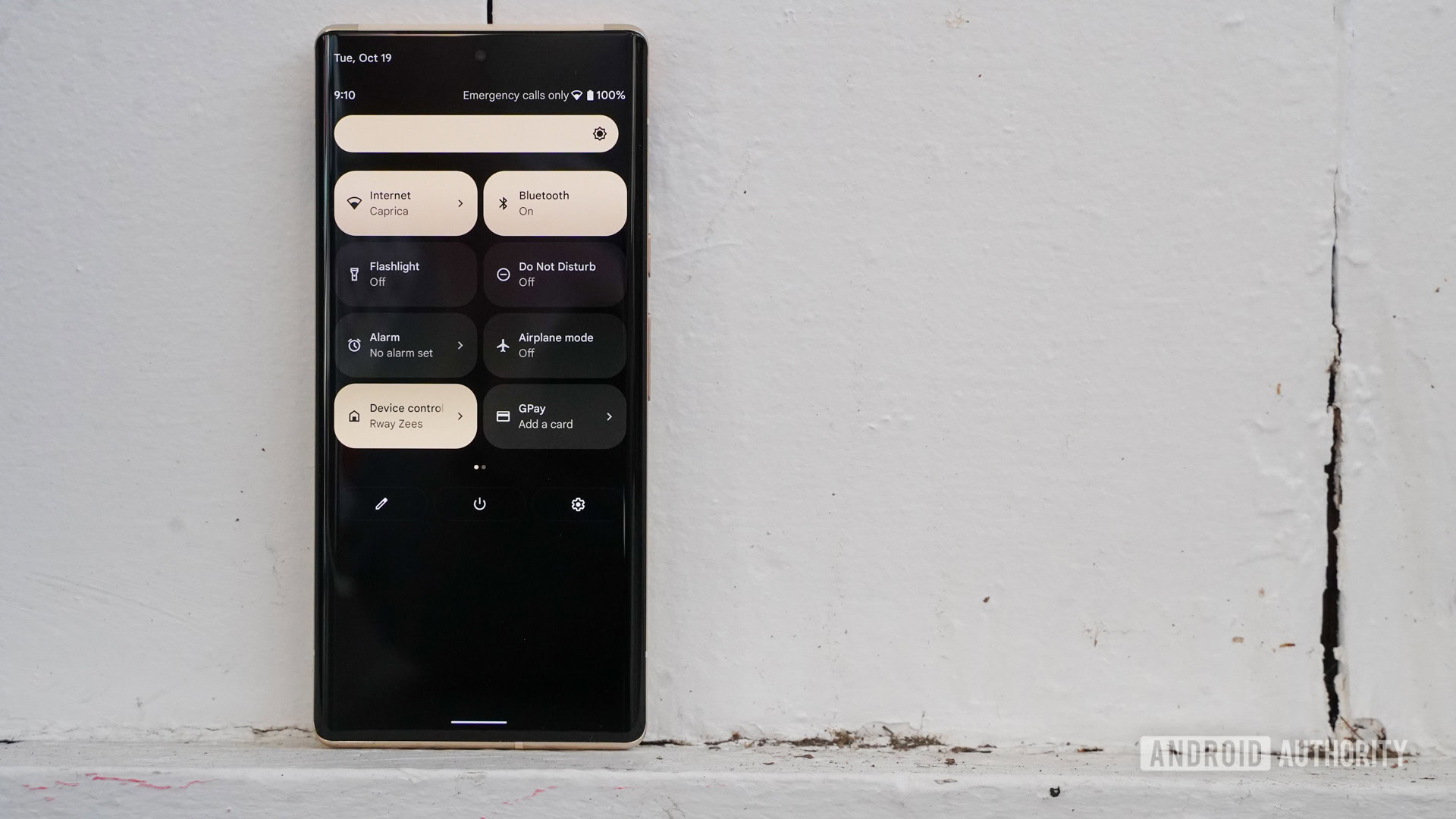
The Google Pixel 6 runs Android 12 and comes with some of its own special features. We’re not allowed to dive into the depths of the operating system just yet, but we can say that the initial experience of booting and using the phone is a quick and cohesive one.
Android 12 is all about Material You, which is Google’s new design language for the platform. The Pixel 6 Pro takes that to heart and makes sure color palettes match across the user interface. That means things like the tones from the wallpaper are spread around aspects of the OS such as the Quick Settings menu and so on. We’ll have a lot more to say about the Pixel 6 Pro’s software in our full review, which will be available in the days ahead.
Google's Tensor processor is what powers these experiences.
Google’s new, home-designed processor is what powers these experiences. The chipset is called Google Tensor and we know almost nothing about it. It relies on the Tensor Processing Unit to boost artificial intelligence performance in a way that should speed up how the phone handles search, audio, video, photos, text-to-speech, and more. Google has not provided detailed specifics on vital aspects of the SoC such as GPU, ISP, CPU, or modem. We do know that the Pixel 6 Pro comes with a significant 12GB of RAM and can be outfitted with 128GB, 256GB, or 512GB of storage. We expect details concerning Tensor to emerge over time and we look forward to putting the Pixel 6 Pro through our usual battery of benchmark tests.
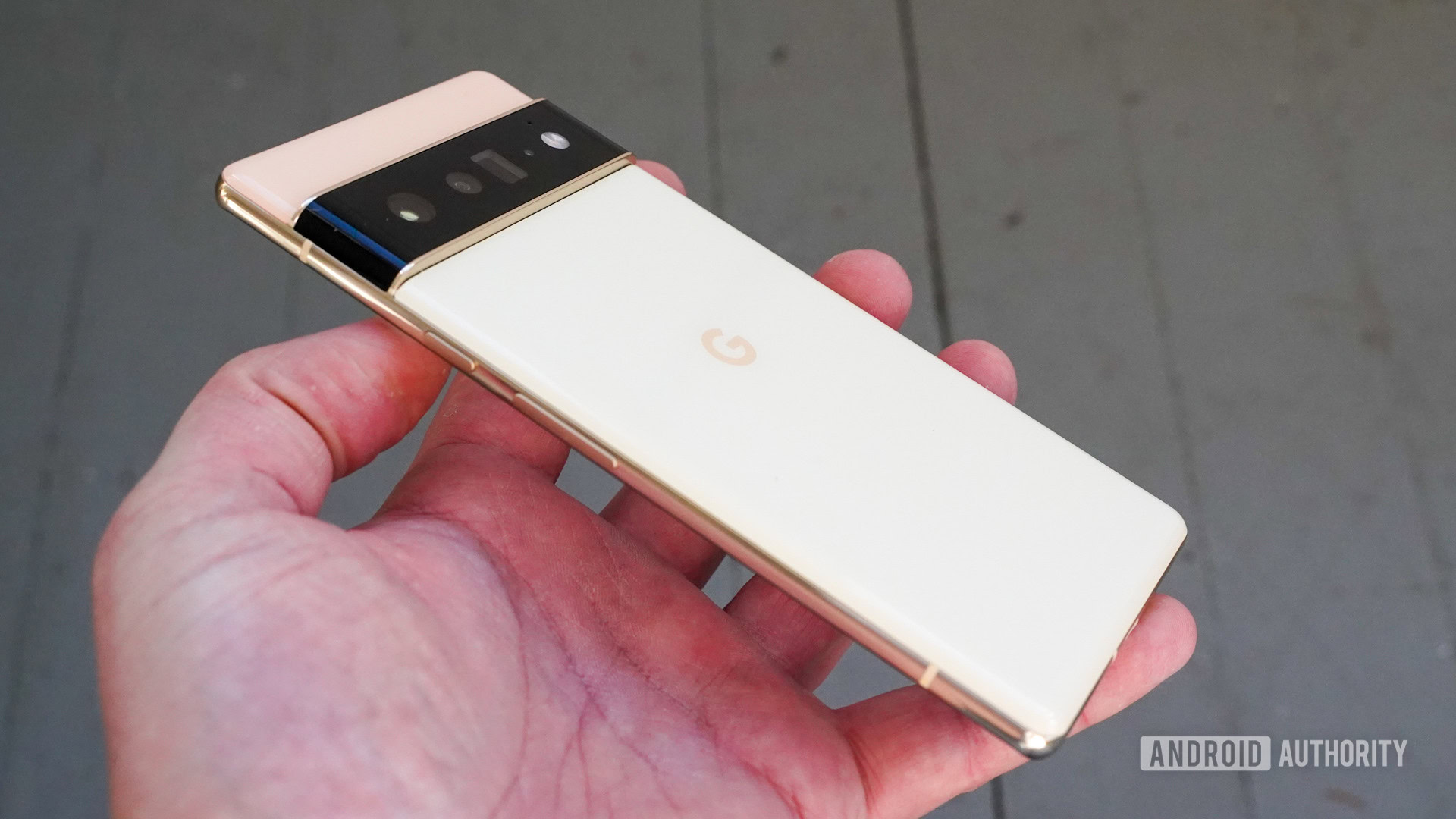
The phone packs a 5,000mAh battery that Google claims will provide “beyond 24-hour battery life” and up to 48 hours of battery life with the extreme mode enabled. Google mentioned that the phone supports 30W wired PPD charging and can reach a 50% charge in 30 minutes. The phone does not ship with the power supply. Boo. The Pixel 6 Pro also supports 23W wireless charging with the second-generation Pixel Stand, and up to 12W wireless charging with every other Qi-compatible wireless charger. Google added wireless battery share to the Pixel 6 line this year, which allows you to charge accessories such as wireless headphones. Again, we look forward to testing all this to see if the Pixel 6 Pro lives up to Google’s claims.
Related: The best wireless chargers
On the wireless front, Google gave the Pixel 6 all the most advanced stuff. There’s sub-6GHz and mmWave 5G (on some models) and there’s Wi-Fi 6E, Bluetooth 5.2, NFC, GPS, and an ultra-wideband chip for ranging and spatial orientation.
These are all good starting points for a flagship at the end of 2021.
About that camera…
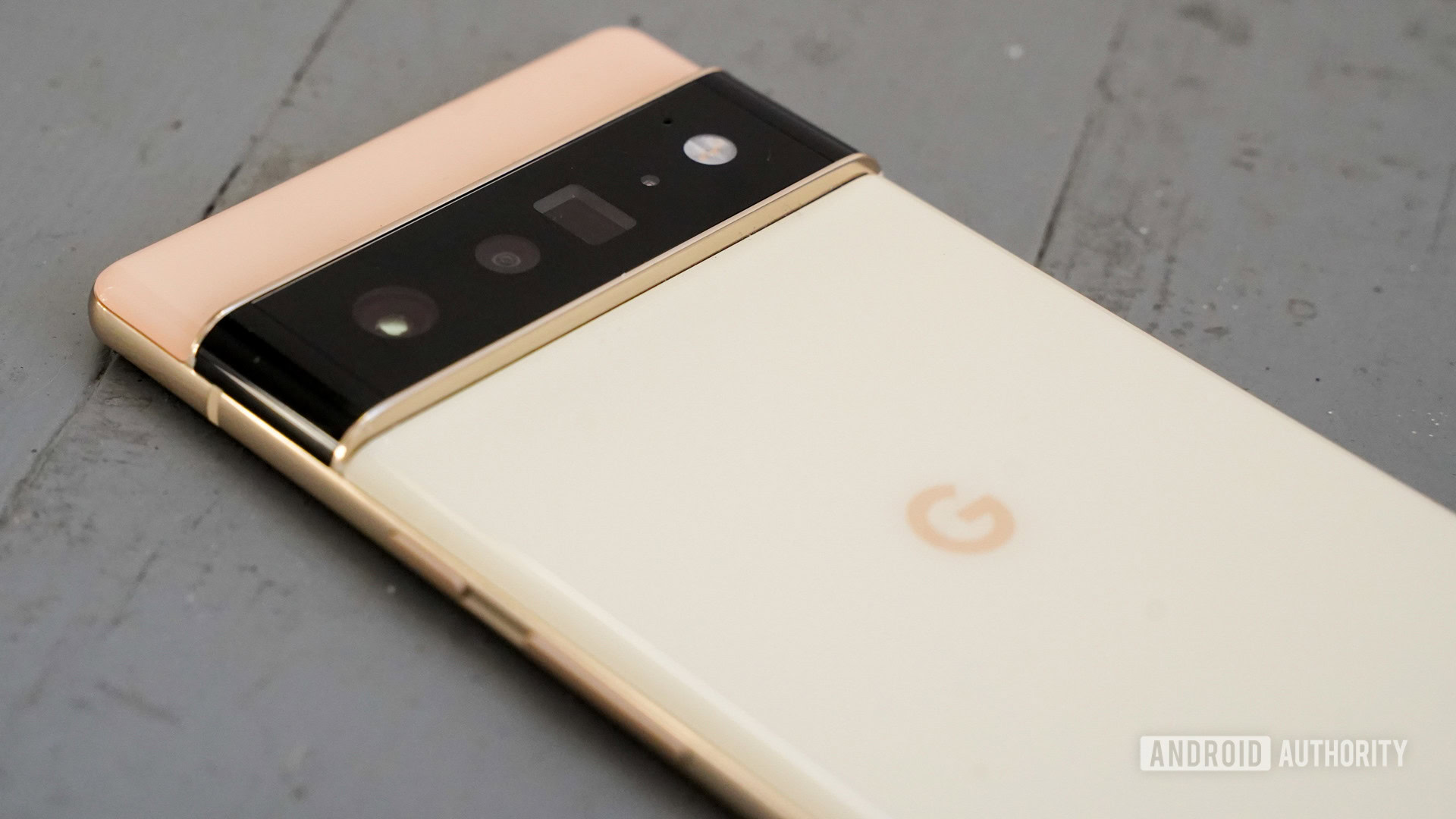
All we can say about the camera for now is that it’s a full set of lenses with lots of software to manage it. It is the most advanced system we’ve seen from Google and we’re absolutely dying to put it to work. Here are the hardware basics that we’re allowed to share.
The main lens is a 50MP job at f/1.85 with phase detection and quad binning. The pixels are 1.2μm wide and the lens offers an 82-degree field of view. The ultra-wide camera has a 12MP sensor at f/2.2 with 1.25μm pixels and a 114-degree field of view. The telephoto includes a 48MP sensor at f/3.5 with a 23.5-degree field of view. It is capable of up to 4x optical zoom and 20x super zoom. Last, the selfie camera offers an 11.1MP sensor at f/2.2 with a 94-degree field of view.
Photography modes include Magic Eraser, Motion Mode, Face Unblur, Portrait Mode, Cinematic Pan, and more.
On the video front, you’ve got 4K at 60fps from both the main and front cameras as well as 240fps slow motion. Video modes include 4K timelapse, astrophotography timelapse, and OIS with a host of stabilization modes and stereo audio recording with audio zoom.
We’ll be sure to put the cameras to the test and include plenty of sample shots in our full Pixel 6 Pro review.
Google Pixel 6 Pro specs
| Google Pixel 6 Pro | |
|---|---|
Display | 6.7-inch OLED 19.5:9 aspect ratio QHD+ resolution 3,120 x 1,440 512ppi 120Hz adaptive refresh rate HDR support 24-bit depth Gorilla Glass Victus front and back |
Processor | Google Tensor Titan M2 security |
RAM | 12GB LPDDR5 |
Internal storage | 128, 256, or 512GB UFS 3.1 |
Battery and power | 5,000mAh (typical) 23W wired charging USB-PD 3.0 (PPS) 23W wireless charging (w/ Pixel Stand) 12W Qi wireless charging Battery share No charger in box |
Cameras | Rear - 50MP main 1.2 μm, ƒ/1.85, 82-degree FoV 1/1.31-inch sensor OIS and EIS - 12MP ultra-wide 1.25 μm, ƒ/2.2, 114-degree FoV - 48MP telephoto 0.8 μm, ƒ/3.5, 23.5-degree FoV 1/2-inch sensor 4x optical zoom OIS and EIS - Laser AF Front: - 11.1MP single 1.22 μm, ƒ/2.2, 94-degree FoV |
Video | Rear: 4K at 30/60FPS 1080p at 30/60FPS Front: 4K at 30FPS 1080p at 30/60FPS |
Audio | Stereo speakers Triple mics Bluetooth 5.2 No 3.5mm port |
Security | In-display fingerprint Titan M2 chip 5 years security updates IP68-rated |
Buttons and ports | USB-C 3.1 Gen 1 Power button Volume rocker Dual SIM (single nano and eSIM) No expandable storage No 3.5mm port |
Connectivity | Wi-Fi 6E (802.11ax) Bluetooth 5.2 NFC support UWB chip |
Bands | [5G Sub 6GHz] Model GLUOG GSM/EDGE: Quad-band (850, 900, 1800, 1900 MHz) UMTS/HSPA+/HSDPA: Bands 1,2,4,5,6,8,19 LTE: Bands B1/2/3/4/5/7/8/12/13/14 17/18/19/20/25/26/28 29/30/32/38/39/40 41/42/46/48/66/71 5G Sub-62: Bands n1/2/3/5/7/8/12/14 20/25/28/30/38/40 41/48/66/71/77/78 eSIM [5G mmWave + Sub 6GHz] Model G8VOU GSM/EDGE: Quad-band (850, 900, 1800, 1900 MHz) UMTS/HSPA+/HSDPA: Bands 1,2,4,5,6,8,19 LTE: Bands B1/2/3/4/5/7/8/12/13/14 17/18/19/20/25/26/28 29/30/32/38/39/40/41 42/46/48/66/71 5G Sub-6: Bands n1/2/3/5/7/8/12/14 20/25/28/30/38/40 41/48/66/71/77/78 5G mmWave: Bands n257/n258/n260/n261 eSIM |
Software | Android 12 Pixel UI |
Dimensions and weight | 163.9 x 75.9 x 8.9mm 210g |
Colors | Stormy Black, Cloudy White, Sorta Sunny |
In-box contents | 1m USB-C to USB-C cable (USB 2.0) Quick Switch adapter SIM tool Paperwork No charger in box (*France has charger and headphones included per local laws) |
Google Pixel 6 Pro hands-on: A beast at first blush
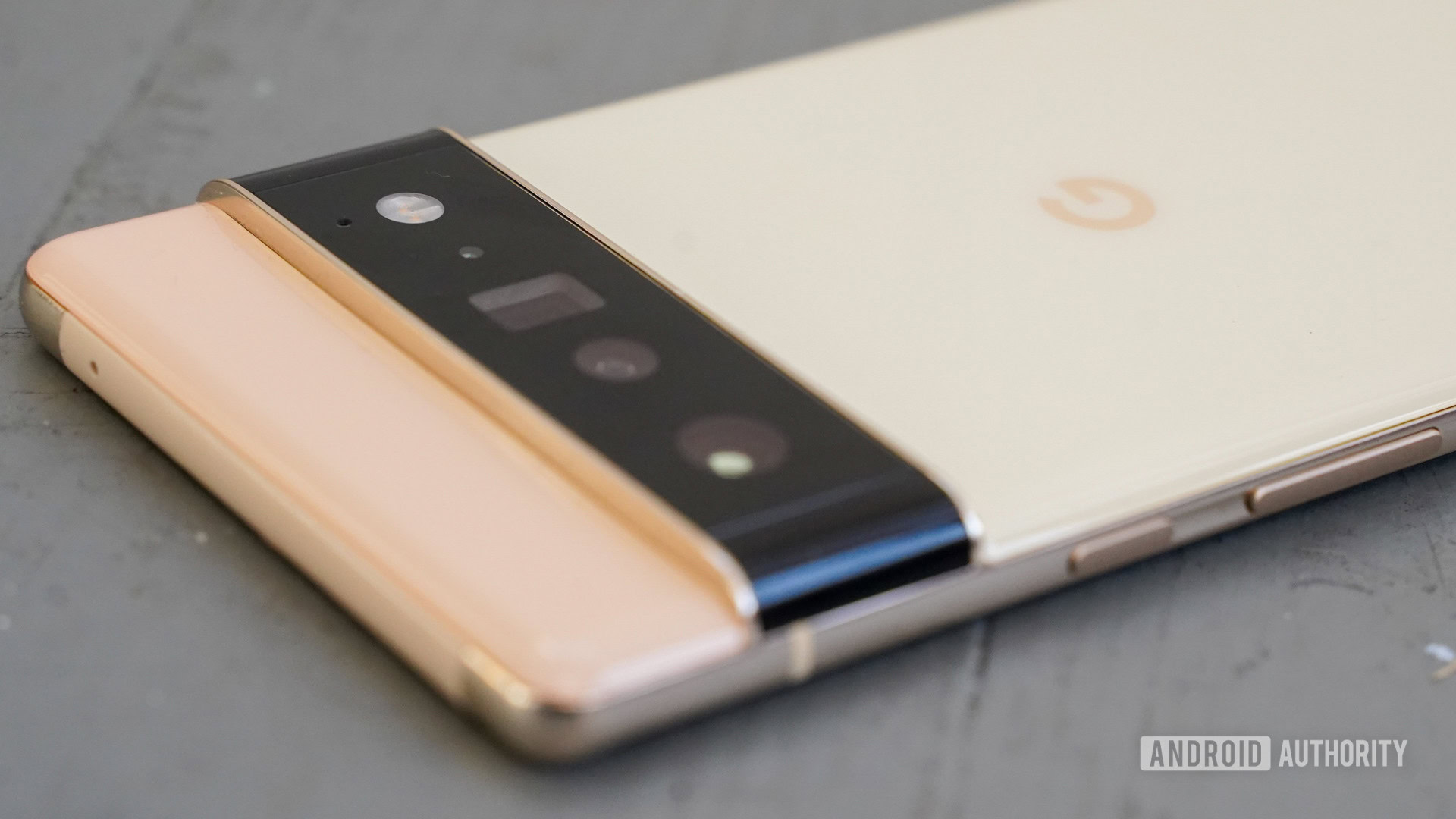
There’s a lot to take in here. Google has fielded an interesting smartphone in the Pixel 6 Pro, perhaps its most interesting device to date. It almost seems as if Google is attempting to include stuff that it left out of previous Pixel phones. Given the hit-or-miss patchwork of features on phones such as the Pixel 5 and Pixel 4 series, that’s not necessarily a bad thing.
Whether or not all these elements can come together and make for a cohesive whole is something we plan to put to the test.
Be sure to stay tuned for our full review of the Google Pixel 6 Pro.
